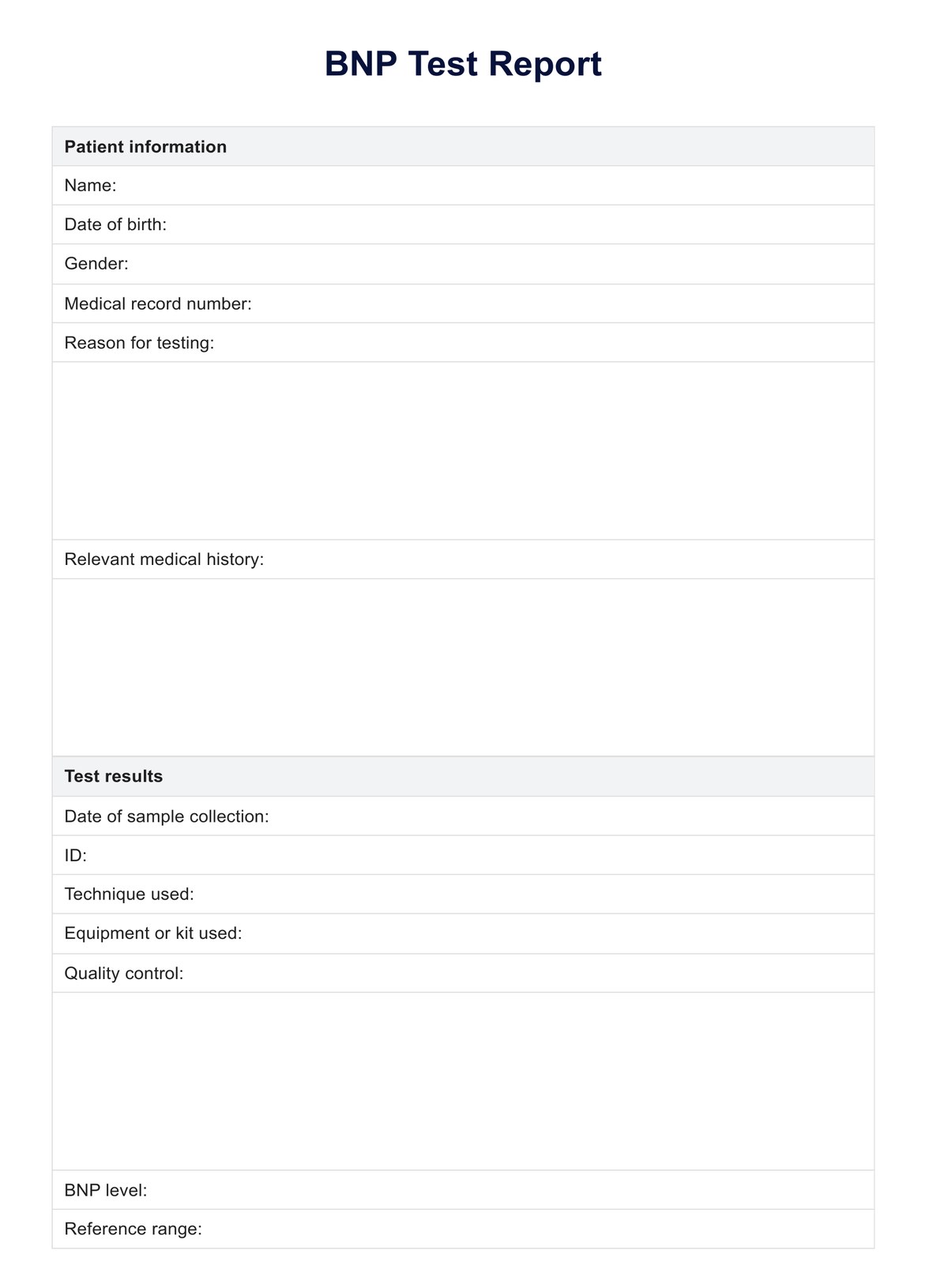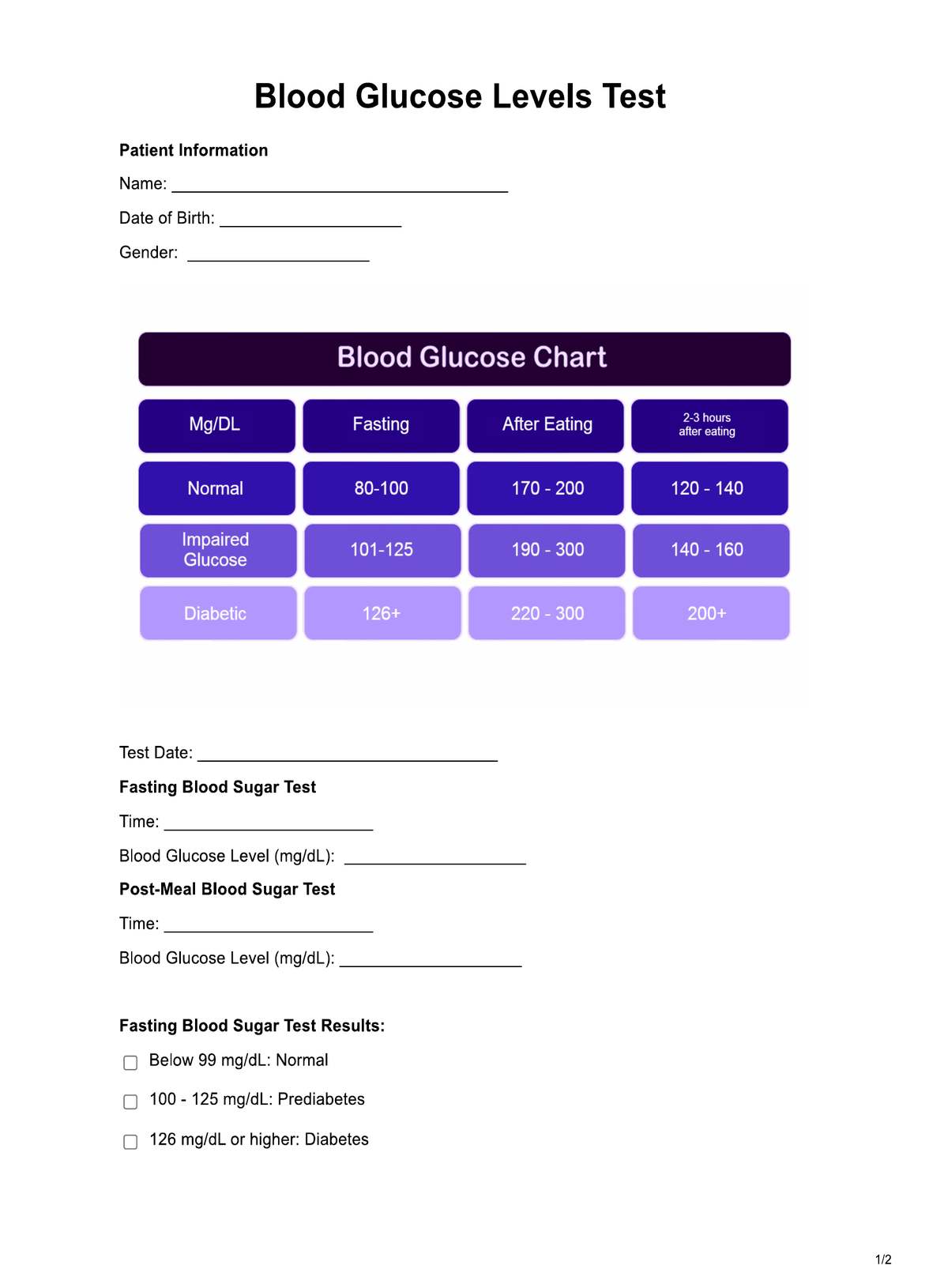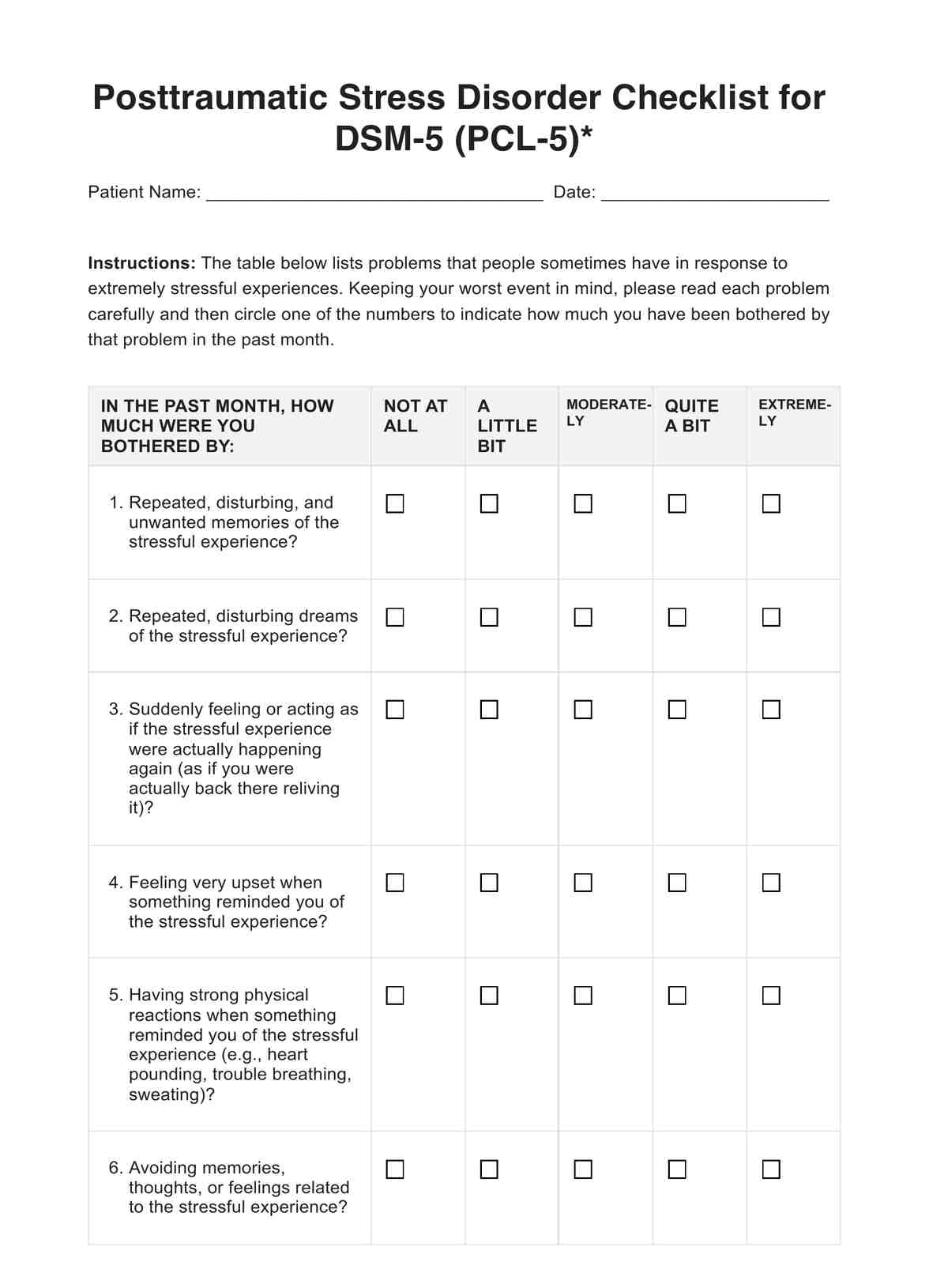Binge Eating Scale
Use this scale to monitor progress and facilitate informed, compassionate care for clients who are living with Binge Eating Disorder.


What is a Binge Eating Scale?
The Binge Eating Scale (BES) is a widely recognized and validated self-assessment tool designed to assess and quantify the severity of binge eating behaviors in individuals. Developed by Gormally et al., 1982, the BES is a valuable instrument for clinicians, researchers, and individuals alike to gain insight into the presence and intensity of binge eating symptoms
Binge eating, characterized by the consumption of large amounts of food within a short period, accompanied by a sense of loss of control, is a significant component of various eating disorders, such as binge eating disorder (BED). The BES is an eating disorder examination questionnaire that comprises a series of questions that capture the frequency and emotional impact of binge eating episodes that can help in the process of developing an eating disorder treatment plan. Respondents rate their experiences on a Likert scale, providing a quantitative measure of their binge eating behaviors.
Binge Eating Scale Template
Binge Eating Scale Example
How does our Bingle Eating Scale template work?
Our printable Binge Eating Scale provides a structured way to assess and quantify binge-eating behaviors. By following these set of steps, you can utilize these scales to gain insights into the frequency and severity of binge eating episodes in clients. Here is how it works:
Step 1: Obtain the printable scale
Click the "Use template" button to access the template via the Carepatron app. This lets you customize the resource. For a simple PDF copy, choose "Download."
Step 2: Read the instructions
Familiarize yourself with the scale's purpose, instructions, and scoring system. Importantly, you and your client should understand that this is a self-assessment tool and not a definitive diagnosis resource.
Step 3: Complete the questions
Provide the scale to your client and explain its purpose and importance. Allow your client time to complete the scale, and encourage them to answer the questions honestly. Be sure to assure them of confidentiality.
Step 4: Calculate the total score
To score the completed scale, utilize the scoring interpretation at the end of the scale. All individual scores are summed to gain the total score.
Step 5: Interpret the results
Review the patient's total BES score based on the provided interpretation guide. Consider the patient's score to assess the severity of their binge eating behaviors. As per the scoring instructions by Gormally et al. (1982), the higher the score, the more severe binge eating behavior may be for that client.
Step 6: Discuss results
Engage in a supportive and nonjudgmental discussion with the patient about their results. Collaboratively explore the next steps, which may involve further assessments, counseling, or therapy.
When would you use this template?
The Binge Eating Scale template proves invaluable for various practitioners and scenarios, aiding in assessing and managing binge eating behaviors. Here's when this resource is particularly appropriate and beneficial:
Clinical settings
Healthcare practitioners, including psychologists, therapists, and dietitians, can utilize the Binge Eating Scale to screen patients for potential binge eating disorders. It helps identify individuals struggling with frequent and intense overeating episodes, providing a foundation for tailored interventions.
Treatment monitoring
Practitioners can periodically administer the Binge Eating Scale to monitor progress and evaluate the effectiveness of interventions. Changes in scores over time offer valuable insights into the impact of treatments, such as controlling urges and guiding adjustments as needed.
Support groups
Facilitators of support groups for individuals with eating disorders can incorporate the Binge Eating Scale to guide discussions and help participants recognize shared experiences.
Health and wellness programs
Health coaches and wellness instructors can include the Binge Eating Scale as part of comprehensive health assessments. It addresses the crucial aspect of emotional eating and aids in promoting holistic well-being.
Research & evidence
The Binge Eating Scale has a substantial history of research and evidence supporting its utility as a reliable tool for assessing binge eating behaviors. Developed specifically to quantify the severity of binge eating episodes, the BES has been widely utilized in both clinical practice and research settings. Its consistent performance across various studies underscores its importance in identifying and evaluating binge eating patterns.
A study by Lavender et al. (2019) highlighted the BES's strong internal consistency and convergent validity, which are crucial indicators of its reliability as a psychometric instrument. These findings affirm the BES as a robust measure of binge eating severity, ensuring that it can accurately reflect the extent of the behaviors it aims to assess.
Further evidence of its versatility comes from the work of Stojanovic-Tasic et al. (2021), who explored its application in adolescent populations. Their findings confirmed the BES's utility not only for adults but also for younger individuals, expanding its relevance to broader age groups. This adaptability makes the BES a valuable resource for clinicians and researchers working with diverse populations.
The cumulative body of research establishes the BES as a well-validated and widely applicable tool for assessing and quantifying binge eating behaviors. Its consistent performance across different contexts and age groups highlights its reliability and underscores its role in advancing the understanding and management of binge eating.
References
Gormally, J., Black, S., Daston, S., & Rardin, D. (1982). The assessment of binge eating severity among obese persons. Addictive Behaviors, 7(1), 47–55. https://doi.org/10.1016/0306-4603(82)90024-7
Lavender, J. M., Wonderlich, S. A., Engel, S. G., Gordon, K. H., Kaye, W. H., & Mitchell, J. E. (2019). Dimensions of emotion dysregulation in anorexia nervosa and bulimia nervosa: A conceptual review of the empirical literature. Clinical Psychology Review, 68, 88-96.
Stojanović-Tasić, M., Milosavljević, D., & Plut, D. (2021). The cross-cultural adaptation and psychometric evaluation of the Binge Eating Scale for the assessment of binge eating in Serbian adolescents. Eating and Weight Disorders-Studies on Anorexia, Bulimia, and Obesity, 26(3), 873-880.
Commonly asked questions
Healthcare practitioners, therapists, and researchers to assess binge eating behaviors in patients or study participants.
The Binge Eating Scale (BES) is not a diagnostic tool on its own. It provides insights into binge eating tendencies and severity, which can assist healthcare practitioners in making informed decisions about diagnosis and treatment.
Yes, printable Binge Eating Scale (BES) templates are available online for free. These templates can be downloaded, filled out, and scored manually.


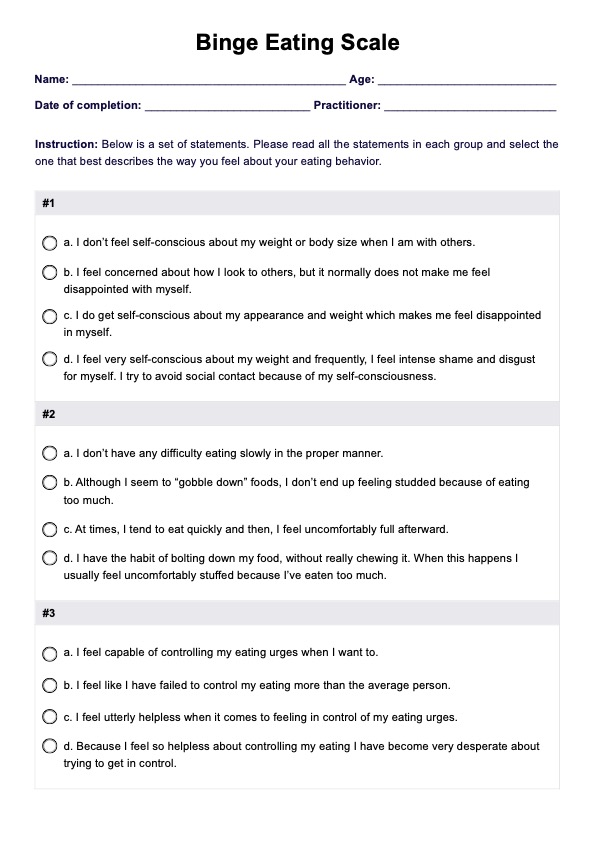
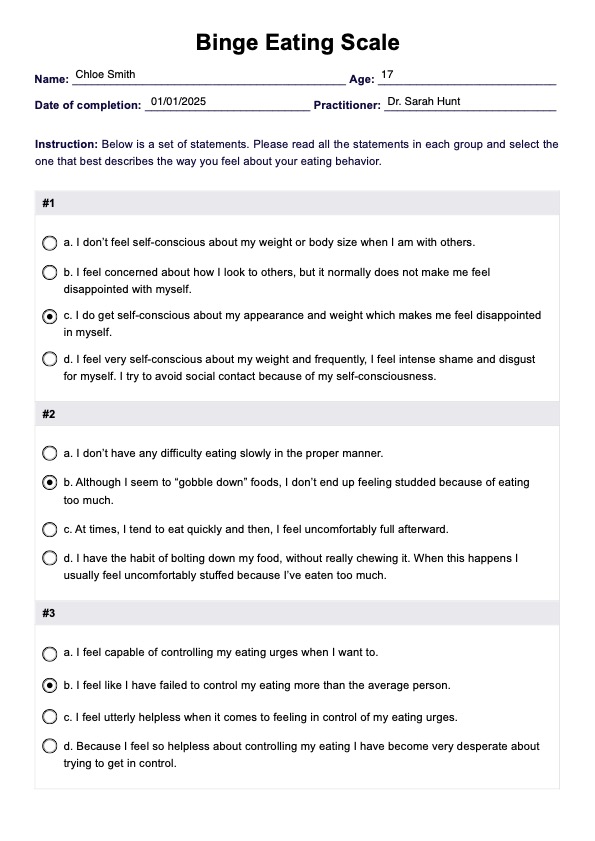

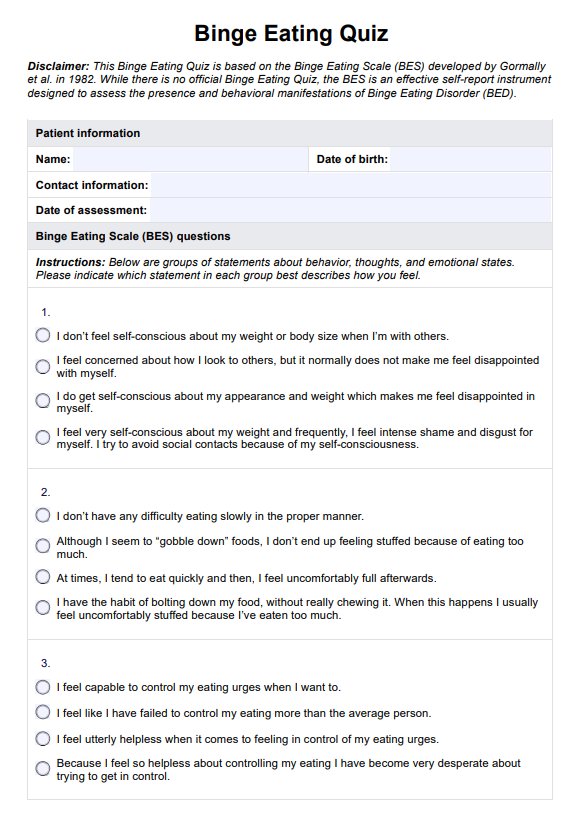
















-template.jpg)

























































































